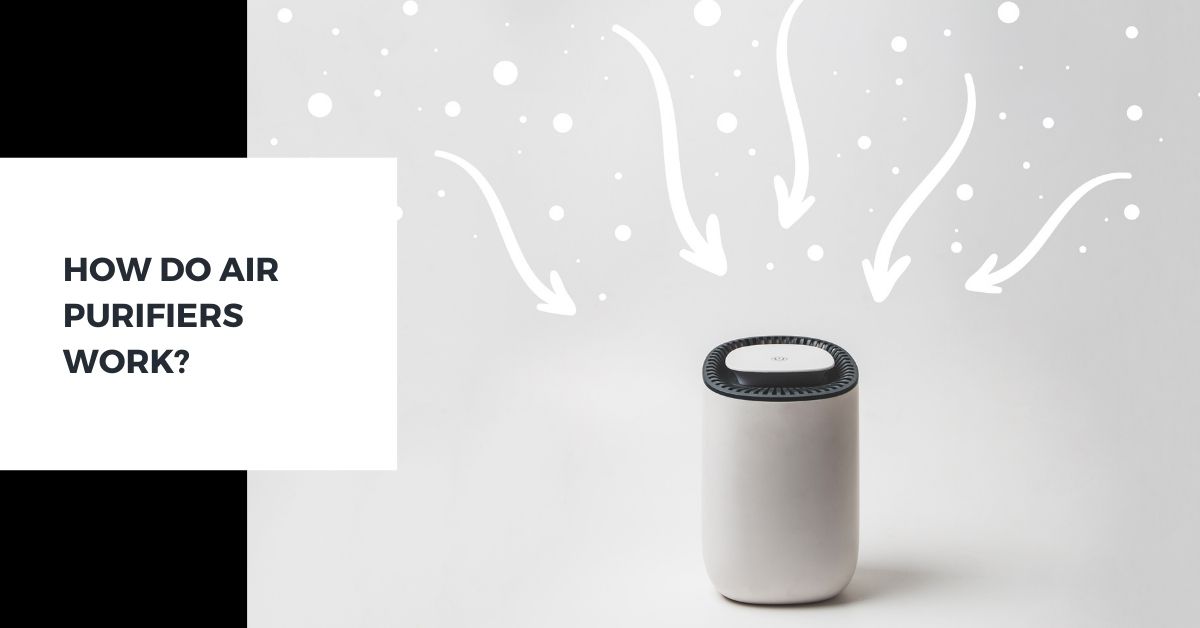There are millions of people who are suffering from allergies and asthma caused by breathing impure air. This is not just limited to one country but it has been found across the globe. And it is not just while roaming outside, but also happens within the home. With this common enemy at sight, there are many companies launching air purifiers to get the purest form of air. This creates confusion in consumers’ minds about how do air purifiers work.
The air purifiers actively work in eliminating harmful microorganisms from the air that you breathe inside the home. It ensures that you get the cleanest air for yourself and your family members.
There are several reports that suggest indoor air is more dangerous than outside air. It can happen through multiple instances which can be the dirty surroundings and unclean home interiors.
As there is a rise in the importance of using air purifiers for homes, there are many products available in the market. These products have their unique way of functioning based on the features that have been integrated. But there are many instances where consumers keep on wondering about how do these air purifiers work. Since the technology and innovation have been remarkable, it can be complicated for the end-user to think about its functionality.
How do air purifiers work?
This is an overview of the functionality in understanding how do air purifiers work. Depending on the type of technology which the air purifiers have been developed, it varies. But overall, the working process is the same across systems.
1. The air passing through a purification system
When you turn on the air purifier, the system starts capturing the air which is present in your room. It is done with the help of a fan that rapidly rotates in capturing most of the areas. The fan of the air purifier ensures that the air within the room is properly passed through the purification system.
3. Pre filtration process
The pre-filtration process is basically the air purifiers are made with a filter that is a type of mesh. This mesh is powerful in removing the larger particles that are basically dust, human hair, and pet hair. You can clean out the rest of the larger particles from the air purifier mesh that are stuck. The machine intakes air which has viruses, bacterias, harmful gases, and foul odour.
3. Initiation of filtration technique
After the air from the room is being captured through the system, the advanced filtration technique is initiated. As the air is contaminated with harmful particles, the air purification system filter is developed by fibreglass, mesh, and paper type of materials. This may sound simple to you but it is an effective element in trapping out the harmful air particles.
The filtration technique has been divided into several sub-components depending on the technology of the air purifier. Some of the common filtration techniques that you can find in air purifiers are as below.
HEPA filter
HEPA filter stands for a high efficiency particulate air filter. These are highly effective when it comes to filtering the air. This is one of the first phases where the air comes in contact during the filtration technique.
When the air starts passing through the purification system, HEPA filters eliminate airborne diseases that are larger than 0.3 microns. A common individual can’t see these microorganisms through the naked eye. The HEPA filter is an excellent device to eliminate particles such as dust, smoke, and chemical substances that are present within the room.
Carbon air filter
The activated carbon air filter is one of the most commonly found filtration techniques in air purifiers. They are popularly known to eliminate gaseous particles from the air.
It also has a high advantage when you have to filter particles such as foul odour, smells from smoke, and other gaseous substances. It also helps in filtering out the mould, dust, and pollen from the air.
UV filtration
The UV filtration works simultaneously with the HEPA filter. The ultraviolet rays are one of the most powerful radiations that can eliminate any kind of virus or bacteria found in the air. It is one of the primary devices in ensuring pure air that doesn’t have any kind of harmful contamination.
Electrical attraction
This technology is developed to eliminate the particles which are of larger size. It is compensated with other types of technology such as electrostatic precipitator cleaners and a negative ion generator. All these filtration techniques work simultaneously with HEPA filters to ensure you get clean air.
Initiation of ionic air purifiers
These ionic air purifiers are usually powered by negative ion generators that are basically a pair of wires which are charged with electricity. These charged wires generate gaseous particles that have negative ions within them. It is one of the strategies to eliminate airborne diseases that are found in the air.
4. Generates pure air
After the filtration technique has been completed, the purification system starts to transfer the air. Basically, this is a review process of how air purification systems sanitize and eliminate harmful pollutants that can be allergens and toxins. When the impurities have been filtered, the system will send out cleaner air for you and your family members.
Concluding thoughts about working process of air purifiers
If you look at the above steps for how do air purifiers work, it may sound a bit technical. When the air that you breathe has allergens, bacterias, viruses, or irritants, the air purifier ensures that all the harmful particles are filtered out. You need to ensure that the devices have been taken proper care of and maintained periodically. This helps in increasing the longevity of the device and allows you to get cleaner air consistently.
When it comes to breathing clean air, you have to shop for a home purifier from a reliable brand. It helps in gaining confidence and creates a safe environment for your family members to inhale pure air.
Further, read:

